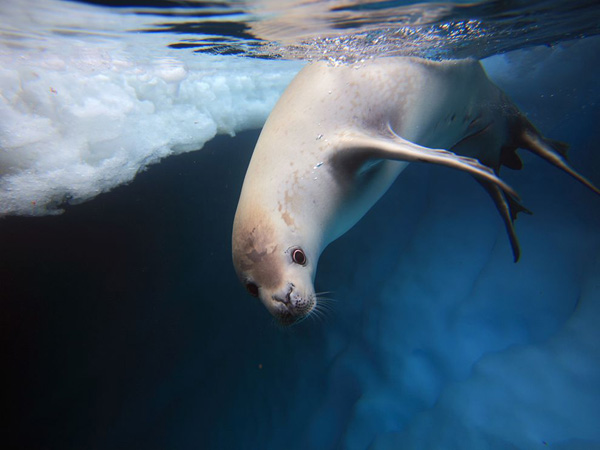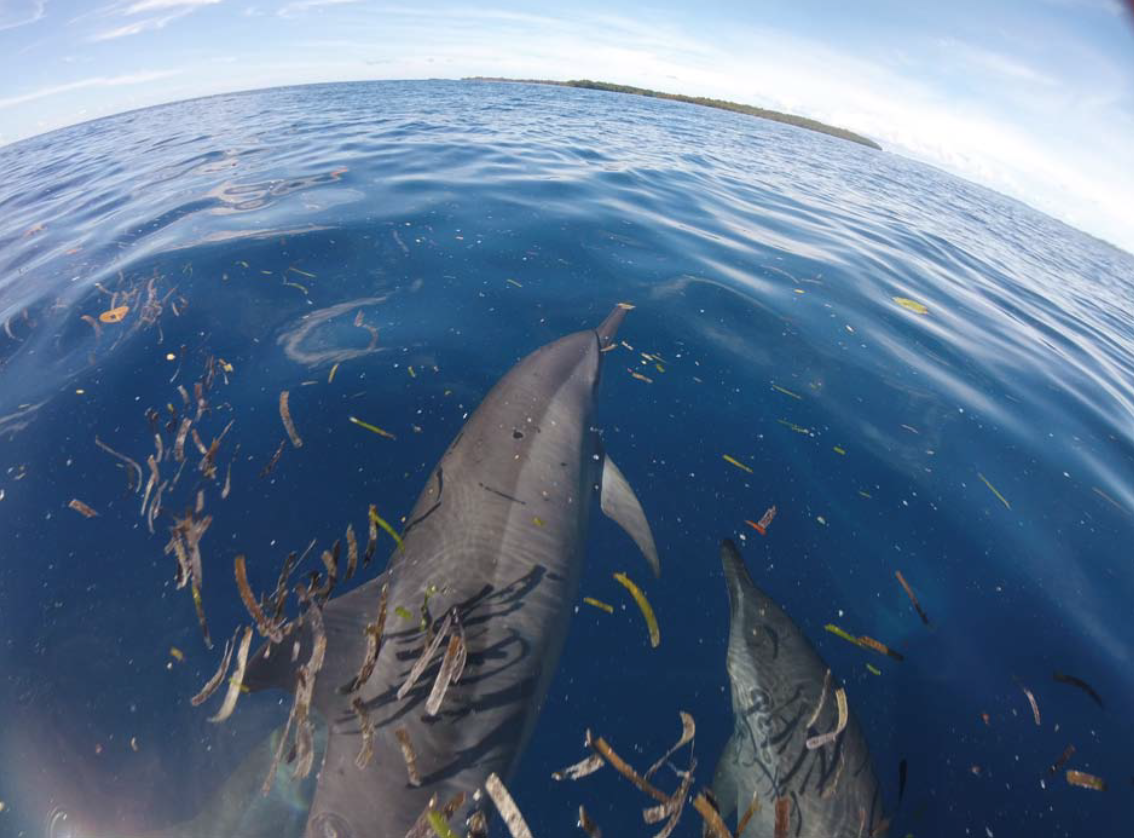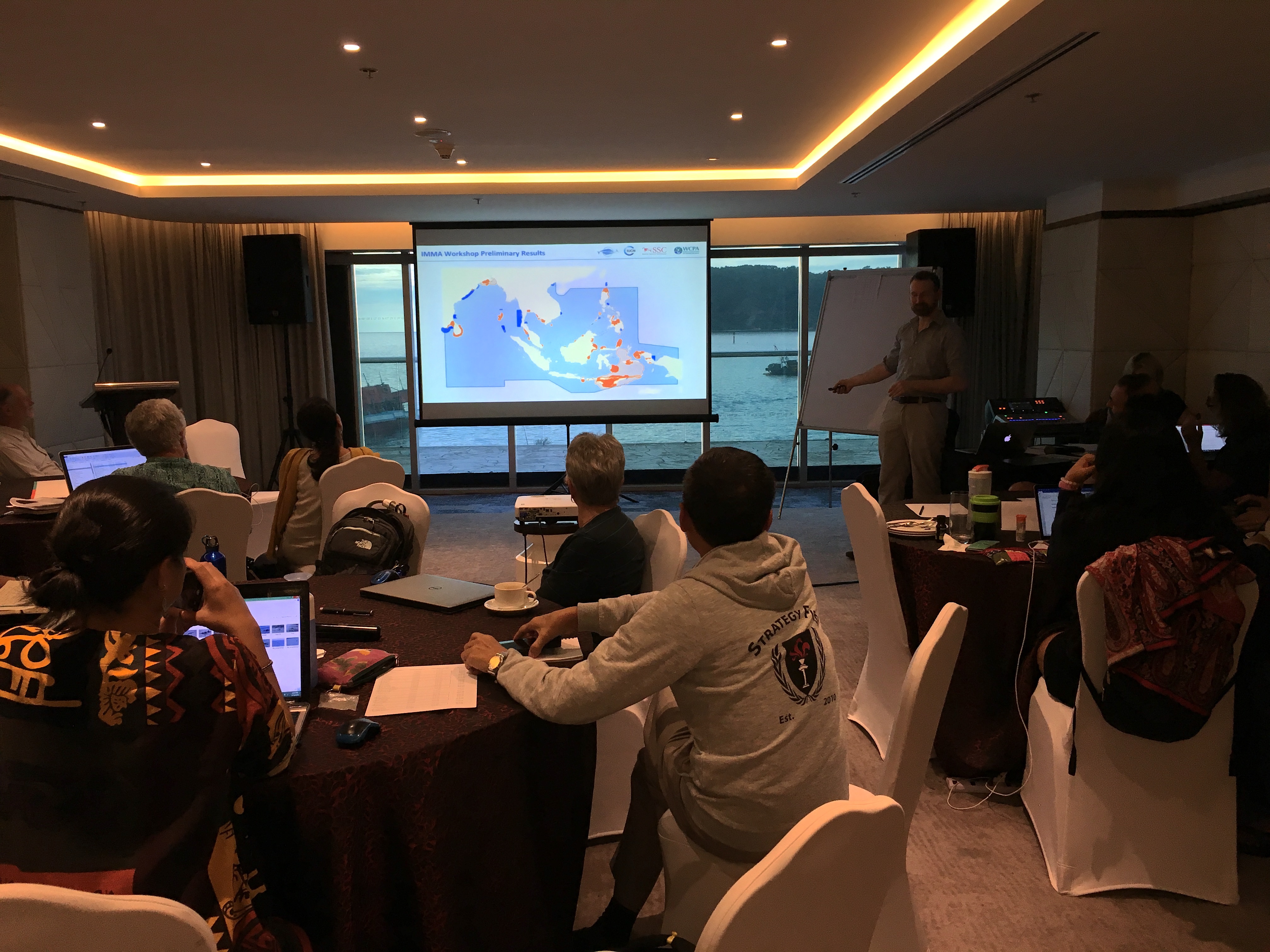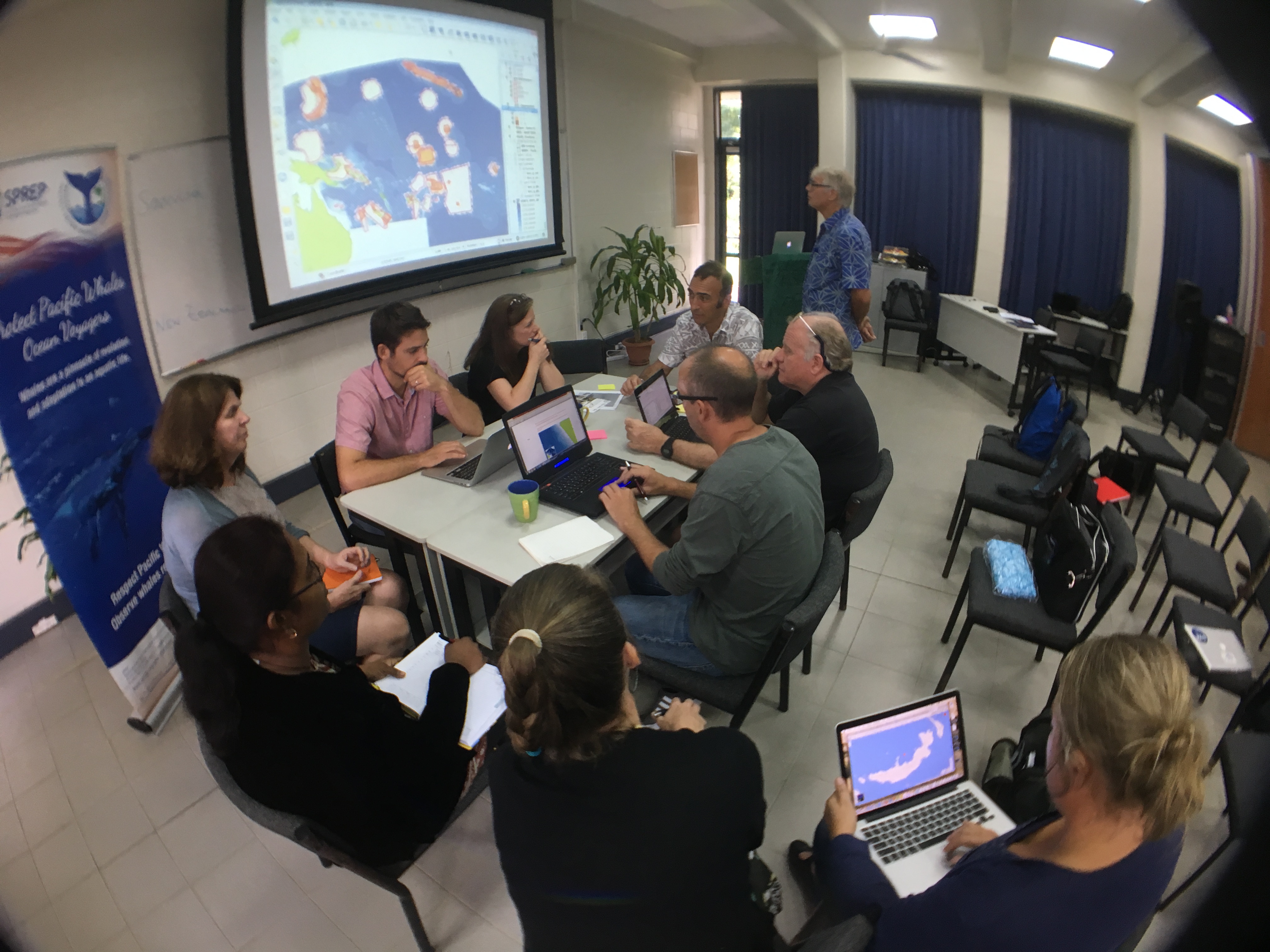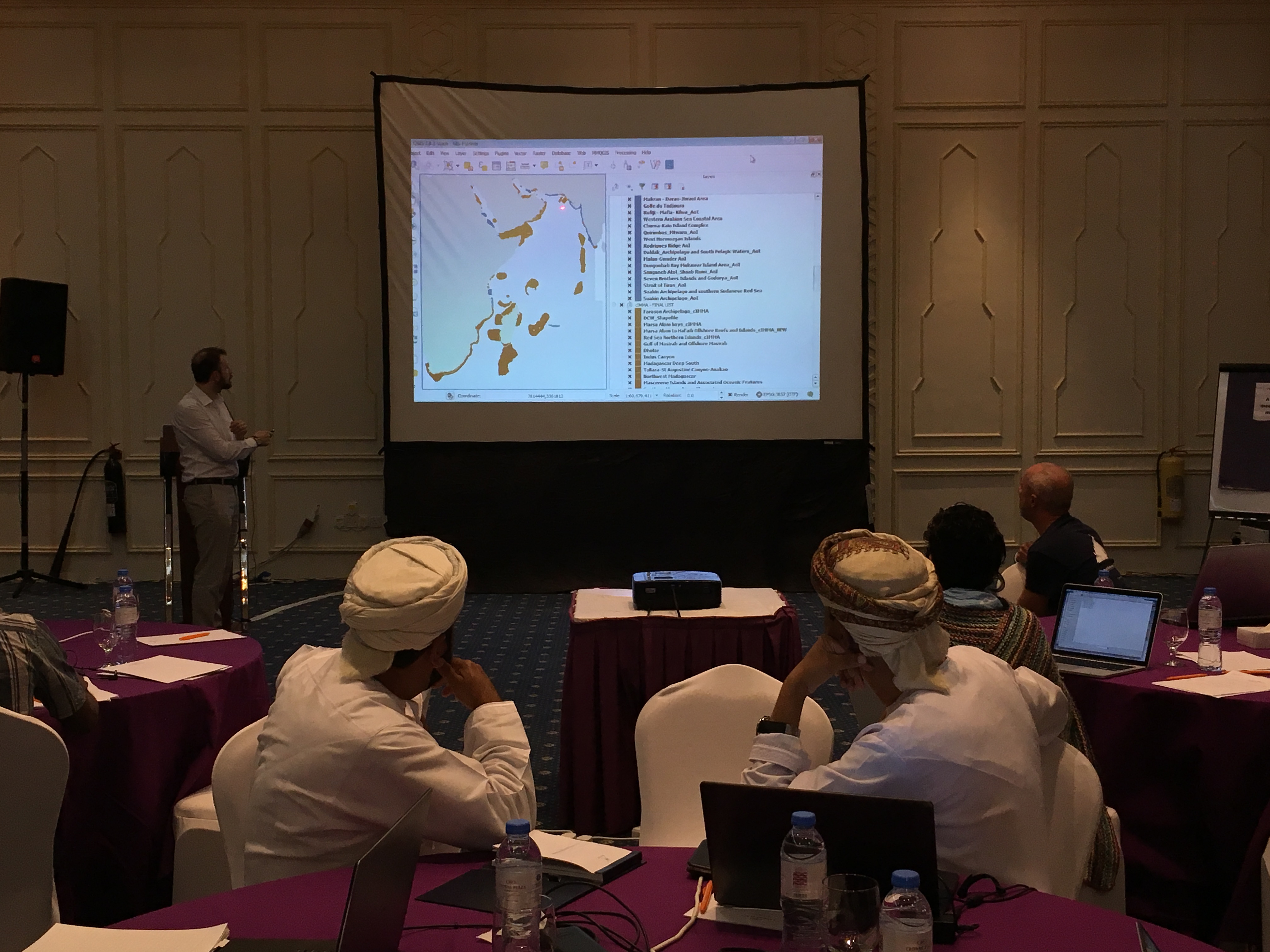Lead: Giuseppe Notarbartolo di Sciara, Tethys Research Institute

Background
Marine mammals tend to be large, conspicuous and charismatic, eliciting awe, curiosity and admiration from humans, who have for centuries included them in folklore and rituals. Yet for the most part, marine mammals live their lives underwater, preferring undisturbed natural environments and showing sensitivity to perturbation. Many species depend on shallow fishing grounds and beaches to breed, while others spend their lives travelling the global ocean or diving to great depths to feed. Some species of marine mammal have complex social structures and acquired behaviour patterns that are passed on from one generation to the next. Like most long-lived animals, they are slow-growing, late to mature, and invest heavily in the upbringing of few offspring. This combination of characteristics renders them vulnerable to – and slow to recover from – sudden, unpredictable or prolonged perturbations to the environment.
The human fascination with marine mammals can work in favour of other species too, as any effort spent in protecting marine mammals, given their size, distribution and range, will encompass the needs and protection of countless other organisms. As such, marine mammals can be considered as catalytic species, their conservation promoting, entraining and augmenting that of entire ecosystems, their functions and services. Therefore, knowledge of areas that are important for marine mammals should facilitate the balancing of human activities in the ocean with the imperative of conserving marine biodiversity.
This work is intended to support the identification of Important Marine Mammal Areas (IMMAs) – discrete portions of habitat, important to marine mammal species, that have the potential to be delineated and managed for conservation. The concept of IMMAs was developed by the IUCN Marine Mammal Protected Areas Task Force, following an extensive consultation period, for use as a layer of information for consideration by governments, intergovernmental organisations, conservation groups, and the general public. It is hoped that IMMAs will eventually be a standardised input to the EBSA process.
During the course of the work, five regional workshops have been organised, covering the Indian and South Pacific Oceans, thus expanding the areas of the global ocean assessed against the IMMA criteria. Attending experts apply scientifically agreed criteria to identify IMMAs, using as a starting point data already identified in the EBSA process, and submit their findings to a rigorous process of review and eventual designation. Given the notion that marine mammals are catalytic species, the creation of a network of IMMAs represents a cost-effective approach to large-scale conservation of marine biodiversity and whole ecosystems.
Objectives
- To identify Important Marine Mammal Areas (IMMAs) in the Indian and South Pacific Oceans.
- Propose a network of IMMAs to the CBD and CMS.
Approach
This work involves the following steps:
- Organisation, coordination and execution of five regional IMMA workshops covering the Indian and South Pacific Oceans, each resulting in the production of a workshop report that lists and justifies candidate IMMAs against agreed criteria.
- Peer-review and validation of candidate IMMAs identified in workshop reports according to IUCN protocols.
- Identification of three target areas within the regions covered by the workshops to use as pilot areas for the analysis of threats to marine mammals and devise appropriate conservation tools and management plans.
- Engagement with stakeholders at the national and international level for the selection of conservation tools and optimum management plans, including network approaches, for the selected pilot areas.
Results to date
Four of the five scheduled regional IMMA workshops in the southern hemisphere have been convened, one in Apia, Samoa, covering the southwest Pacific Ocean, the second in Kota Kinabalu, Malaysia, covering the northeast Indian Ocean and the South East Asian Seas region, the third in Dhofar, Oman, covering the western Indian Ocean and Arabian Seas, and the fourth in Perth, Australia, covering the waters of Australia, New Zealand and the South East Indian Ocean. The fifth scheduled IMMA workshop, due to take place in late 2020, is delayed pending the lifting of restrictions associated with the COVID-19 pandemic. Not wanting to waste time during global lockdown, an extraordinary regional IMMA workshop has been convened virtually in February 2021, targeting the Black Sea, Turkish Straits System and Caspian Sea Region.
All IMMAs recognised so far are available to view on the Marine Mammal Protected Area Task Force’s eAtlas and database.
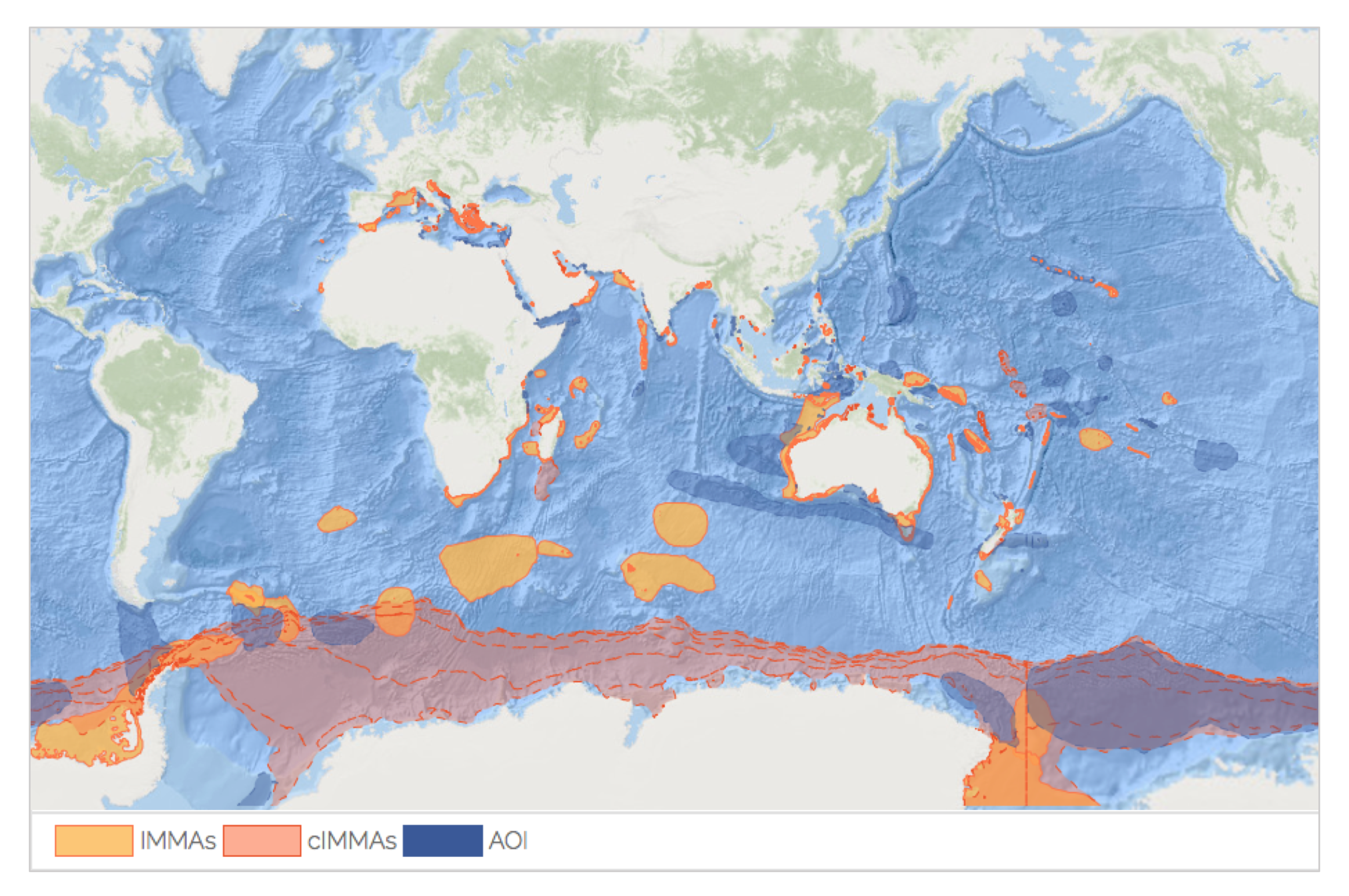
In addition to the many IMMAs and areas of interest proposed during the workshops, three areas have been identified as a pilot areas for the analysis of threats to marine mammals and the devising of appropriate management plans by local experts and stakeholders. These selected implementation areas are the IMMA around the Republic of Palau, the Southern Andaman Islands in India, and Bazaruto Archipelago to Inhambane Bay in Mozambique.
On the strength of this work, additional regional IMMA workshops have been commissioned by other sponsors to expand the coverage of the IMMA process beyond the Indian and South Pacific Oceans.
The utility and contribution of IMMAs to international conservation initiatives has been formally recognised by the Convention on Migratory Species and Wild Animals (CMS), approving an IMMA resolution during its 2017 Conference of the Parties. IMMAs were considered further by the CMS during its 2020 COP in Gaqdingar, India.
The following publications have emerged from this work:
- Place-based Approaches to Marine Mammal Conservation, by G Notarbartolo di Sciara and colleagues, in Aquatic Conservation: Marine and Freshwater Ecosystems 2016, Vol. 26, Suppl. 2 (download).
- Looking Beyond the Horizon: An Early Warning System to Keep Marine Mammal Information Relevant for Conservation, by T Agardy and colleagues, in Aquatic Conservation: Marine and Freshwater Ecosystems 2019, Vol. 29 Suppl. 2 (download).
- Healing the Wounds of Marine Mammals by Protecting Their Habitat, by G Notarbartolo di Sciara and E Hoyt, in Ethics in Science and Environmental Politics 2020, Vol. 20 (download).
- Important Marine Mammal Areas: a spatial tool for marine mammal conservation, by E Hoyt and G Notarbartolo di Sciara, in Oryx 2021, Vol. 55 (download).
- The Important Marine Mammal Area Network: A Tool for Systematic Spatial Planning in Response to the Marine Mammal Habitat Conservation Crisis, by MJ Tetley and colleagues, in Frontiers in Marine Science, Vol. 9 (download).
Application
By highlighting the presence of marine areas of particular ecological value, IMMAs serve the function of promoting the conservation of a much wider spectrum of species, biodiversity and ecosystems, well beyond the specific scope of conserving marine mammals. Indications of the presence of IMMAs helps to identify marine areas valuable in terms of biodiversity during the process of Marine Spatial Planning. IMMAs and the process by which they are identified are also an effective way of building institutional capacity at the international and national levels, with particular benefit to isolated or remote communities where formal expertise is scarce and the cultural significance of marine mammals is often high. Marine mammals are indicators of ocean ecosystem health and as such they can support both the CMS’s resolutions and the CBD’s portfolio of EBSA descriptions as a basis for promoting environmental protection and developing management plans for specific areas in the world’s oceans.


